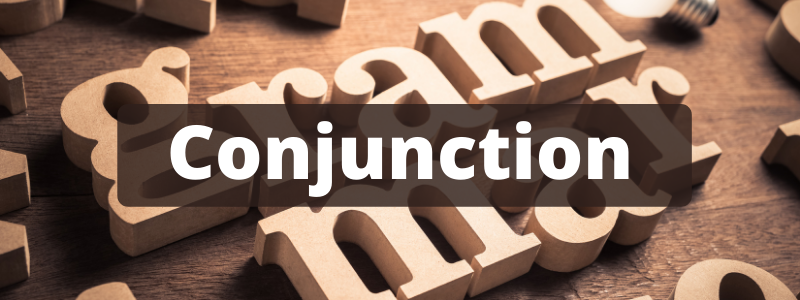
Here is a precise definition of conjunction.
Conjuction definition: “Conjunctions are words that join two or more words, phrases, or sentences.
See the below sentences
- Jhilmil is a sincere student. Badal is a sincere student too.
Jhilmil and Badal are sincere students.
- Jhilmil reads only mysteries. Badal is fond of historical fiction.
Jhilmil reads only mysteries while Badal is fond of historical fiction.
List of common conjunctions
The following list contains some of the most commonly used conjunctions:
- and
- but
- or
- because
- however
- after
- so
- than
- unless
- that
- while
- since
- during
Conjunctions in a sentence
Below are the examples given for you:
- I tried a lot to get good marks but hit almost 60%.
- I have 2 bikes and a car.
- You can have an apple or a banana for breakfast.
- I always worked hard so that I can be successful.
- My mom woke up early in the morning to manage her household work.
- It’s a long time since we met.
- She waited at the café till 11 am.
- You will not get a driving license until you turn 18.
- When is your mother coming from Mumbai?
- He will not buy you a scooter unless you score good marks.
- Where is the bakery store?
Read Also
Types of conjunctions
Conjunction words are segregated into three types –
- Coordinating Conjunction
- Subordinating Conjunction
- Correlative Conjunction
- Coordinating conjunctions
Coordinating Conjunction
It connects two or more equal verbs. In practice, this usually means coordinating conjunction will connect the same parts of speech, such as verb to another verb. For example:
- Everyone sang and danced.
- We had food and beverages.
- We went shopping and movie yesterday.
Subordinating conjunctions
It is used to connect a subordinate clause also called a dependent clause, to an independent clause. For example:
- Whenever he comes, we go together for a walk.
- We stay inside and watch movies whenever it rains.
Correlative conjunctions
It is the pair of conjunction which works together. For example:
- I need a dress for the party either black or white. (lists two options)
- She would much rather drink coffee than tea. (states a preferred choice)
- The donkey was as big as a horse! (forms a simile)
Conjunctive Adverbs
These are also called transition words. They join sentences or words or phrases just like words on the standard conjunction list can. For example:
- As a result of the new job, he relocated to a new city.
- She was tired and cold, and furthermore, she was hungry.
- We cooked at home instead of going out.
- A soldier’s life is indeed a difficult life.
Key Notes:
Where to place conjunctions
Conjunctions are mostly used between the things they connect. For example:
- I am sleepy and hungry.
- He tried to go shopping, but the store was closed.
- Smita is more intelligent than other students in the class.
Features of Conjunctions
The following features of Conjunction are found from the above definition: It Joins the Words Together
Examples
Below are some examples of conjunctions where they are acting as linkers to join different words together.
- I always work quickly and clearly.
- Do you like to eat fish and curd together?
- We will go shopping and have dinner together.
Some Rules for Conjunction
Read Also
Rule 1.
The conjunction so/as and as/ as is used to make a comparison. But, so/as is used in negative sentences whereas as/as can be used for both negative and affirmative sentences.
Example:
- As you behave so you have to bear.
- She is not as beautiful as you.
Rule 2.
The conjunction Both is always followed by the conjunction and.
Example:
- Both Sunil and Hari went to school.
- She is both a dancer and singer.
Rule 3.
Unless and Until are negative words. Unless is action-oriented while Until is time-oriented. Remember, do not use the words (never, not, no) with the clause containing until and unless words.
Example:
- The father asked his daughter to wait until he returned.
- Unless the employee works hard, the company will not progress.
Stay tuned with Laws Of Nature for more useful grammar articles
